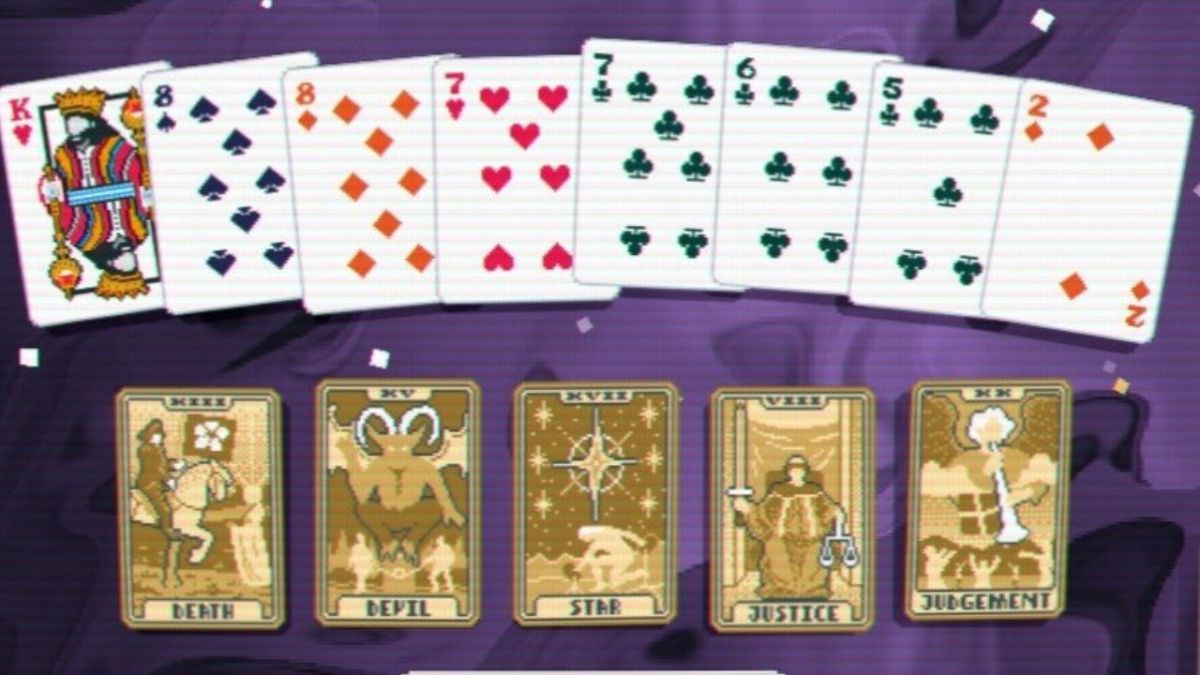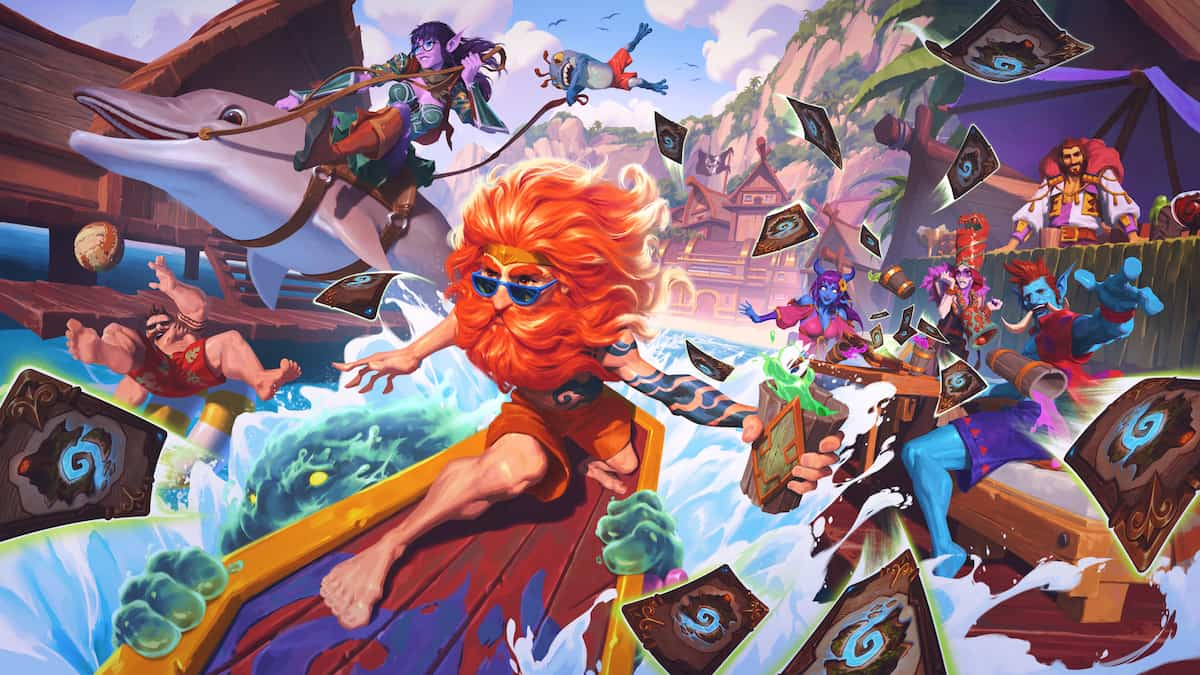Introduction
Last week we looked at the ruined pieces of the new meta to see what we could salvage for the coming months. This week we continue that trend by picking up the remnants of Priest and use them to create something new. Well…almost new. We are in the throes of a brand new meta, and that means there is a lot of room for experimentation. Today we are going to piece together a new style of Dragon Priest that, while not entirely new for those who know this build, is something I have not covered in the past. Yes, we’ve dipped our toes in the dragon well a couple of times in the past, but this combo version with an extremely low curve (which Nicslay took this one to number one legend) is brand new territory for me.
Key Cards
Silence/Potion of Madness
These two cards are one-ofs, which makes them extremely important when looking at the entirety of the deck. When analyzing a build, it is always important to look at the one-ofs because they are always chosen with a specific purpose. Here, Silence and Potion of Madness are crucial to this build’s success. Taunts are always going to be a problem for this build, and that is especially true in the current Warlock fiesta we live in. Though you have a solid matchup against Gul’dan (more on that later), being able to get rid of a Voidlord here and there is extremely powerful. This also enables you to slow down more aggressive decks if you have an awkward draw. Taunts are common in things like Druid and Warlock, but don’t be afraid to use Silence on an early buffed minion when fighting aggro.
The other card here, Potion of Madness, serves two key purposes. The first (and much more obvious) is the ability to take down some early decks. However, as so early game cards are weak or imbalanced (with more health than attack) lining this up against anything other Hunter is going to be hard to do. Rather, the reason this card is so important is because it gives you a way to take something and combo with it. As strong as your deck is, there are going to be times where you can’t cement board presence. Potion allows you to get around that by being able to turn any small threat into damage. One of the biggest combos here is using potion with Twilight Acolyte. That instantly makes any opposing minion (regardless of health) two attack, giving you a way to use it for combo purposes should you need it. This isn’t going to come up a lot, but it comes up often enough where you should know it exists.
The Combo
This is not the firs time we’ve touched upon Inner Fire/Divine Spirit, and I assume it will not be the last. This pair was largely seen as a meme play for most of its existence, but it has now entered the realm of playability. Every deck that has ever run this approaches it in a different way. Some builds (like silence) go the giant minion route, some decks try to play for all-draw, and others aim for surprise (which is what we see here). Dragon Priest is a midrange deck that focuses on board control. That is an amazing plan against fast or other midrange builds, but what about slow control? How does a deck like this one handle say, Control Warlock? Rather than try to fight through multiple Voidlords or their annoying combo pieces, you just kill them before they get started.
As long as you don’t tip your hand, nobody is going to see this coming. I know you’re getting tired of me talking about the importance of surprise, but there are certain inalienable truths we must hold in this game, and that is one of them. Last week, you got a glimpse of what happens when your opponent is playing something you don’t expect (in that case, Questless Quest Mage) and saw how it can lead to blowouts. That works here because almost nobody is going to expect you to have a combo. Yes, they might suspect something is off when you play so many low-curve threats, but for the most part you are going to give your opponent dragon, and they will accept dragon. As a result, try to push the board in a way where you always have something live. One or two minions might die, but when you have three or four, something will live. Your opponent is often going to let things slide, and when they do you can kill them out of nowhere.
Card Draw
One of the trickiest things about this build is drawing cards. There are two main engines for that here: Northshire Cleric and Novice Engineer. Of the two, Northshire is going to be more important because it has no inherent cap on how much the one drop can draw. The early minions have gotten much weaker over the past few months, allowing a 1/3 to get damaged without dying all the time. Your goal with this card is to get as much value as humanely possible. However, you also don’t want to lose your curve. This is a midrange deck, with the combo coming second. Against faster decks (where your combo finisher is going to be much less important) you want to use the 1/3 to trade and then fall back on your midrange cards. However, when fighting control or combo decks, you need to go hard with cleric. This can mean missing two or three minion drops just to get extra cards. Something else to note is that once you play your Novice Engineer, people are often going to suspect that something odd is going on. The card is simply not run in any Priest builds, and it is always going to raise suspicion. In fact, some people may suspect a combo once the 1/1 comes down. As a result, if your play depends on surprise, you want to be careful about the turn you use it.
Curious Glimmerroot/Drakonid Operative
Another great pairing. I want to talk about Curious Glimmerroot and Drakonid Operative together to remind you that this is not just a combo deck. Yes, you are going to win a lot of games by bursting people down out of nowhere, but that is going to come up much less often than you first may think. Your gameplan, as with any Dragon Priest deck, revolves around strong bodies and over-statted threats. This list takes the classic value build and injects some life into it. These two cards are a big part of that because they both give you value without making you jump through hoops. You want to build out a strong curve and press for midrange advantage. However, it also helps to be able to get some extra spells or threats as you go. Cards like this make that work because you both get a minion and a draw. Try to press these whenever you can and always prioritize them because of the options they give you.
The combo is not the focus of this build. This is something that can be hard to grasp when looking at the list, but it is key to know for when you pilot it. Many people make the mistake of thinking that, because they killed their opponent with the combo, that combo is what won them the game. Instead, most of the time you win far before that by playing in a way that enables your combo to go off when it does. Every threat you put down needs to pressure your opponent in some way. Maybe you get them to use removal, maybe they have to spend resources. It doesn’t matter as long as they are getting overwhelmed. Getting minions to stick is the entire focus of this build. Do not forget that, and do not lose your midrange style just to become a combo deck. Most of the time that plan will not work.
Duskbreaker
We finish our discussion with the only reason this entire deck exists, Duskbreaker. The 3/3 dragon is an OP card that everyone who has played since Kobolds fears. And that’s exactly what you want. When looking at a combo deck like this (which has limited draw and a dual-themed win condition) many people may ask, how on Earth do we ever have time to set up the combo? There are a few means towards that end, but Duskbreaker is one of the most important. That is because, once people peg you as a minion-based Priest, they are going to play afraid. You need to take full advantage of that by putting out weak minions against small boards. Your opponent won’t feel like they are under pressure, and, as they don’t want to over-commit into Duskbreaker, will be more lenient about letting things live. This is one of the very best ways to set up the combo.
On the other hand, when trying to get your opponent to play into Duskbreaker, you simply need to swarm the board. Nobody wants to play into the 3/3, but people also don’t want to die to an army of fire-breathing lizards. When you need to get the AOE (or see if your opponent has any ways to deal with a swarm) just run everything out onto the board. It can be easy to fall back or try to play around certain spells, but most of the time your opponent is going to play around you. Understand that and use the 3/3 to put your opponent into tough situations. They either sit back and get overrun by your threats, or they commit into AOE. Yes, your minions may take damage in the process, but that largely doesn’t matter since most of them have so much health.
Deck Code
AAECAa0GArW7AqUJDvzqAsv mAtnBAtjBAtHBAvC7Arq7AoK1AvIM0 QqNCOUE +AKcAgA=
Matchups
The four decks I see the most while playing the ladder.
Control Warlock
We begin at the end. Warlock is going to be a tough matchup simply because of the fact that they have approximately 10000 taunts. Oh yeah, and those taunts create even more taunts. However, you also have your combo pieces. Earlier, I mentioned the power of surprise, and this match shows why that is so good. Warlock is going to give you a ton of windows to hit them for lethal. Not only will they often ignore (or not be able to kill) your smaller threats, but they also will do things like use their turn five to play Possessed Lackey. Normally, that’s a strong move. However, when you are just building into a 20 point burst play, it’s often the last thing they’ll ever do. Know when your opponent needs to set up their combo and try to find as many combo pieces as you can by then.
To win this game you need to set up early pressure. Most Control Warlocks, for all of their strong finishers and tight removal, have no set way to an answer early game threats. Yes, they might have a Defile here or there, but they aren’t equipped to take down high-health minions like Northshire Cleric or Kabal Talonpriest. If you can build quickly and then move into your damage or combo-based part of the game, Gul’dan is simply never going to be able to catch up. It’s that simple of a formula. Either they have their combo before you, or they die. Just know that you are on a bit of a clock. If you have a silence you want to hit Lackey as soon as you can, but if you don’t this game needs to end around turn six.
Aggro Paladin
Midrange or aggressive Paladin variants have been good for quite some time, and none have been more consistent than Murloc Paladin. Well, the fish are back and they are coming for your face. This game is one of the matches where, unless you are in a desperate race, you need to throw everything you can into controlling the board. Most games you want to focus on setting up longer pieces, but there is simply no way to do that against Paladin. Aggressively mulligan for Duskbreaker, and make sure you have a way to deal with a turn four Call to Arms. The rule is to trade, trade, and trade some more. Not only can you not afford the damage should your opponent have a buff, but you also need to limit murloc synergy as much as you can.
The goal of this game is to run your opponent out of cards. Part of that is getting your big threats down early and then using them to chip off small minions. The hard part of this matchup is that, while you almost always are going to have favorable trades, your opponent can also go much wider than you. Even one minion that you can’t kill can dominate a board. Know that, and try to sculpt your plays in a way where your opponent trades with you. They might be ahead in tempo, but as long as they are focused on your board, you have time to draw into answers. The other important rule is to always play around Divine Favor. You do want to draw cards with this deck, but you can limit that if you want to. Unless you are pushing for lethal or setting up a big combo play should try to focus on getting bodies down onto the board and thinning your hand.
Hunter
You knew this was coming. As with every other nerf period in the history of Hearthstone, Hunter is back. Rexxar just loves putting himself into unsolidified metas (as we’ll see in The New Standard this week) and that once again holds true. This matchup is going to be another control-oriented game where you need to work to stop Hunter from ever building up a curve. The one-two-three beast plan is as real as ever, and it will kill you by turn five if you ever fall behind too quickly. However, unlike Paladin, the “kill everything” plan switches over by the mid-game. Your deck is not great against Hunter’s bigger threats, which means once you’ve cemented the board you need to push. This not only forces your opponent to be defensive, but it also helps you set up your combo without worrying about your life total.
The most important thing about this matchup is saving Duskbreaker. If you see any secrets it means your opponent is likely packing Lesser Emerald Spellstone. You are a strong deck, but Hunter also lives off of tempo. As you will always kill decks that give you a window to go big, Hunter will massacre you if you give them a chance to gain priority. You need to largely forget about abilities here (except for breaker) and do everything in your power to put down one big body after another. Once this rolls around to turn six, if you aren’t ahead, you’re dead.
Secret Mage
The final deck we will look at, Secret Mage is steadily building up as time goes on. This is still not as popular as I imagined, but it packs such a punch that I assume it will move it up in the coming weeks. This game is going to be a tough battle simply because it is very hard for your to play around Explosive Runes. You want to treat this matchup like a hybrid of the above two. Early trading is important, and most of your focus should be on getting to your combo. However, you also need to stay alive and make sure Mage can never burst you down. That requires a balance. Always think about your opponent’s damage potential in relation to your life and then adapt your play accordingly. Also, as you move into the middle turns of the game, you should try to save a cheap spell for Counterspell[/card]. The secret will generally be triggered during the early parts of the game, but don’t let it ruin your combo. I typically will try to keep Silence for that if possible.
Mulligan Guide
One of the great things about this deck is how simple the mulligans are. You want to throw back the combo pieces and keep cheap minions. Easy-peasy. Northshire Cleric, Novice Engineer, Netherspite Historian, and Radiant Elemental are your four must-keeps. However, you should always keep Power Word: Shield and Shadow Visions when you have a good opening. Curious Glimmerroot and Kabal Talonpriest are great with the coin or the curve, and you should keep Twilight Acolyte against minions that make big minions early. Finally, Drakonid Operative can be kept if you need something to trigger historian, and Twilight Drake should always be kept on curve.
Conclusion
Priest is not a class that I have a long history with, but it is always fun to step out of that comfort zone. Most of my favorite Priest builds have been centered around combo pieces, which is obviously true here. Not only do I enjoy the twists on the dragon package, but I also love the low curve. Surprising decks will always net you wins on the ladder, especially ones with this strong of a base. If you like dragons (or just Priest) this is a great one to take for a spin. Until next time, may you always discover more Duskbreakers.





Published: Feb 19, 2018 09:56 am